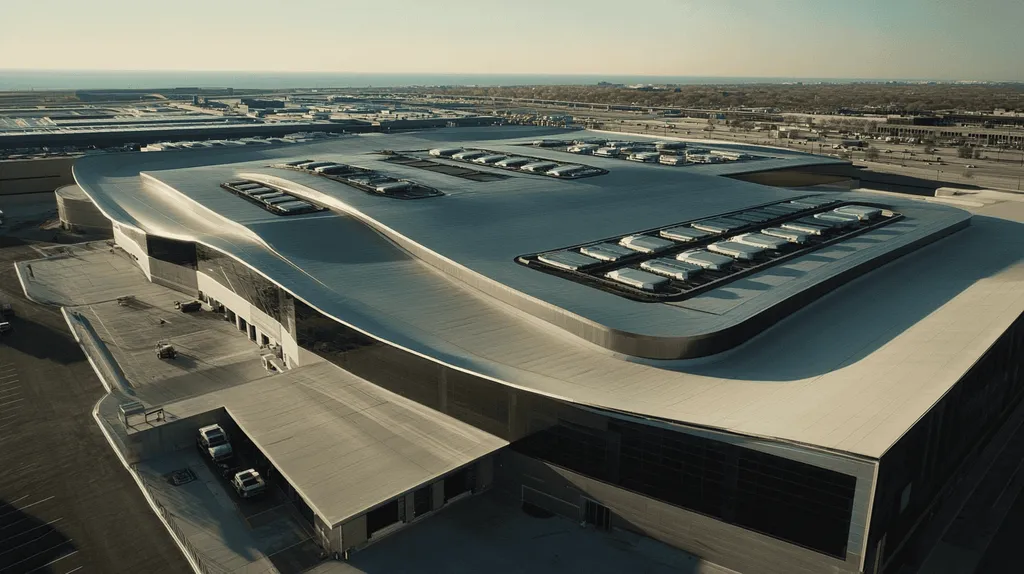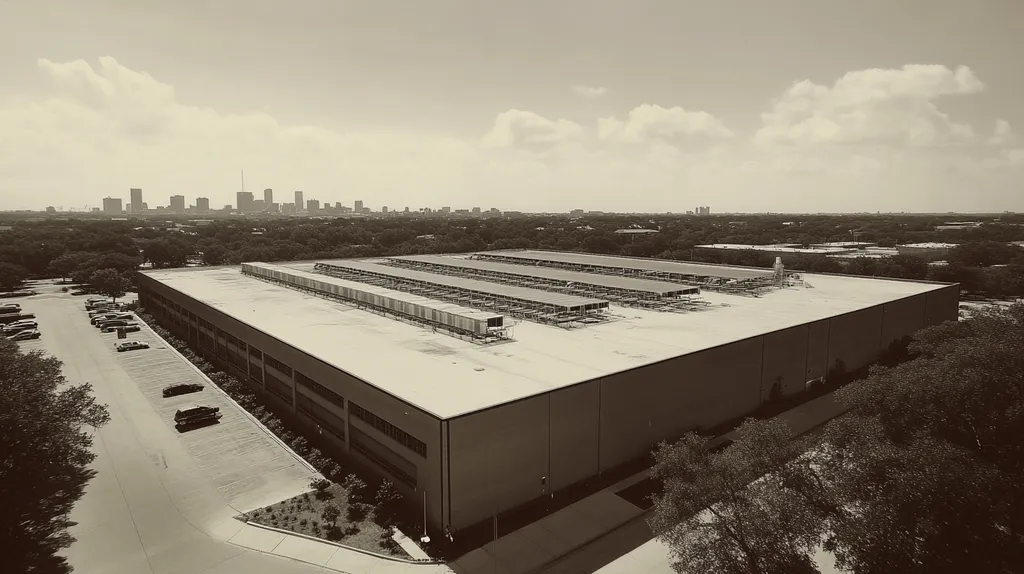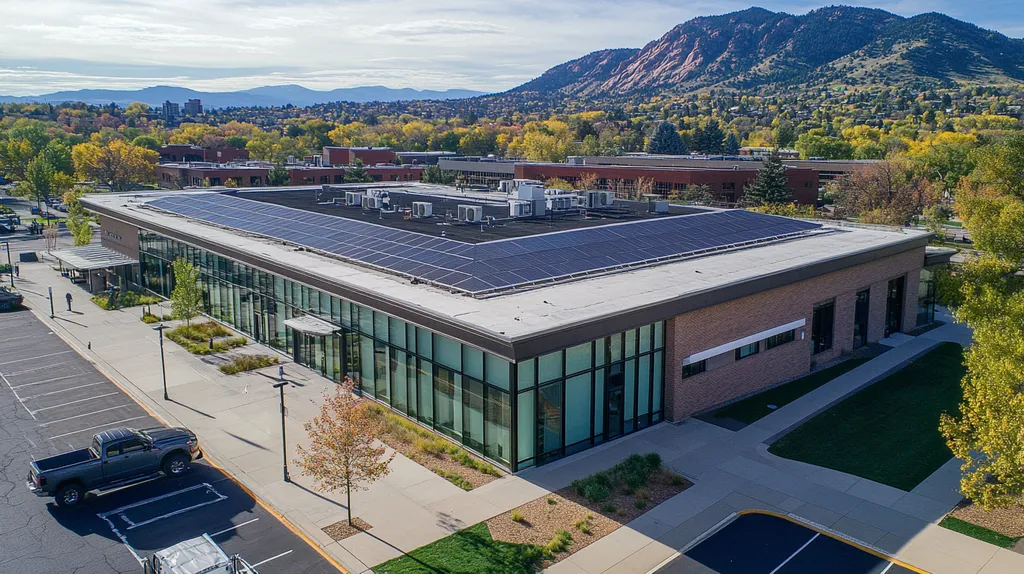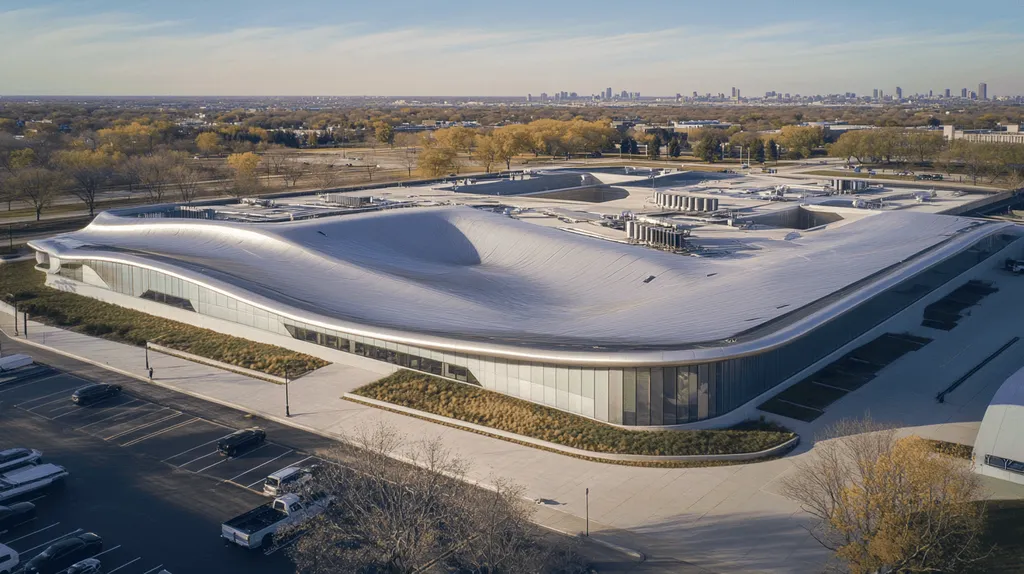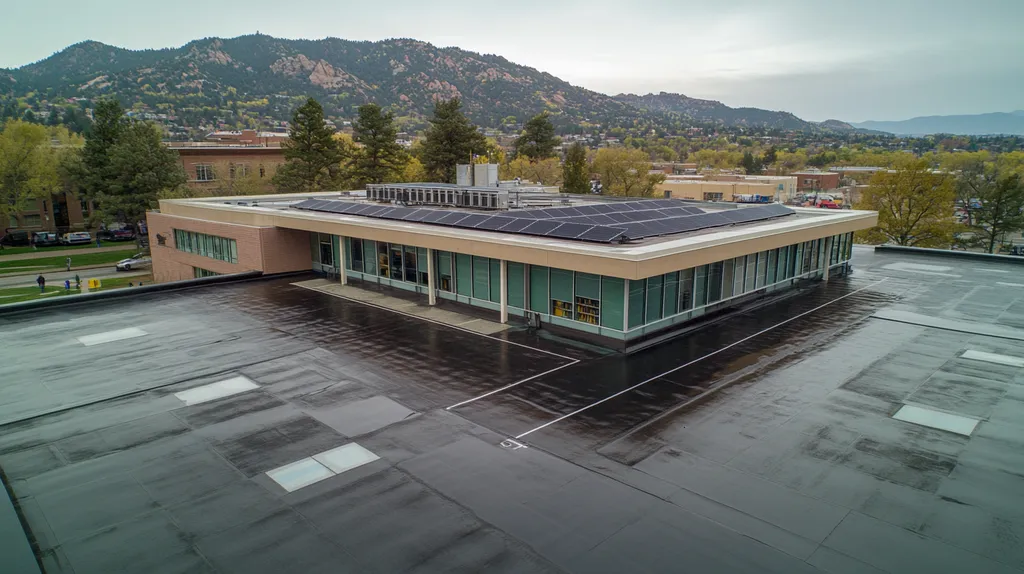Welcome to today’s Battle Royale featuring two roofing heavyweights: “TPO” in the east corner versus “PVC” in the west!
Tonight’s showdown pits these contenders against each other across six punishing rounds designed to test every aspect of their performance for the Lifespan of a Commercial Roof Investment.
At stake? Millions in potential costs, decades of building protection, and the critical performance demands of modern commercial and industrial facilities.
Our professional judging panel will evaluate each round on technical merit, real-world performance, and value delivery. After all six rounds, we’ll declare our ultimate champion.
Ladies and gentlemen, facility managers and building owners… it’s time to rumble!
ROUND 1: INITIAL COSTS & INSTALLATION
When it comes to commercial roofing investments, the devil’s in the installation details. A single misstep during initial setup can transform your dream roof into a recurring nightmare of repairs and headaches. Today’s battle between TPO and PVC isn’t just about materials – it’s about finding that sweet spot between upfront costs and long-term performance.
Material Expenses
The proper installation of any commercial roofing system can make or break its long-term performance. The importance of correct installation techniques, from proper flashing to adequate ventilation, directly impacts how long your investment will last. (source: Decra)
TPO membranes typically cost $3-5 per square foot, making them the budget-friendly champion of commercial roofing. This lower price point has helped TPO capture a significant market share, especially among cost-conscious property managers looking for immediate savings.
PVC membranes command $6-9 per square foot, reflecting their premium positioning in the market. While this higher price tag might cause initial sticker shock, PVC’s superior chemical resistance and durability often justify the investment.
Due to its significantly lower upfront cost, TPO claims the “ADVANTAGE” in material expenses.
Installation Complexity
TPO installation follows a relatively straightforward process that most experienced roofing crews can handle efficiently. The lightweight nature of TPO membranes makes them easier to maneuver and position, reducing labor requirements.
The simplicity of TPO installation doesn’t require specialized training beyond standard roofing certification. This accessibility means more contractors can bid on your project, potentially lowering labor costs.
PVC installation demands more technical expertise, particularly for proper heat-welding of seams. These specialized skills often translate to higher labor costs and a smaller pool of qualified installers.
The learning curve for PVC installation is steeper, requiring more precise attention to detail and specialized equipment. This complexity can extend project timelines and increase labor costs.
TPO takes the clear “ADVANTAGE” for installation complexity.
Project Timeline
Speed matters in commercial roofing – every day of installation means potential disruption to business operations. TPO’s simpler installation process typically allows crews to cover more square footage per day.
A standard TPO installation can progress 30-40% faster than its PVC counterpart. This efficiency translates directly to fewer business disruptions and lower labor costs.
PVC installations require more time for proper seam welding and detail work. While this attention to detail contributes to longevity, it also extends the project timeline significantly.
The additional time required for PVC installation can mean more days of potential weather delays and business disruptions. This factor can significantly impact overall project costs and scheduling.
Thanks to its faster installation speed, TPO earns the “ADVANTAGE” in project timeline.
ROUND 1 WINNER: TPO
ROUND 2: DURABILITY & LIFESPAN
When your commercial roof fails, it’s not just about patching a leak – it’s about protecting millions in assets, operations, and reputation. While TPO and PVC both claim championship belts in durability, the real battle plays out over decades of punishing weather, chemical exposure, and foot traffic.
Like heavyweight fighters, these materials each bring unique strengths to the ring. Understanding their durability differences isn’t just about choosing a winner – it’s about ensuring your investment goes the distance.
Material Resilience
TPO membranes pack impressive flexibility and UV resistance into their lightweight frame. Their reflective surface helps buildings stay cooler, reducing energy costs and thermal stress on the membrane itself.
However, TPO’s Achilles’ heel lies in its seam strength and puncture resistance. Even minor impacts from maintenance traffic or fallen branches can compromise the membrane’s integrity.
PVC brings heavyweight durability to the fight with superior puncture resistance and virtually unbreakable heat-welded seams. Its molecular structure creates natural resistance to chemicals, grease, and industrial pollutants.
While both materials can deliver solid performance, PVC’s superior toughness and proven track record give it the clear “ADVANTAGE” in material resilience.
Weather Resistance
TPO performs admirably against basic weather challenges, with good resistance to UV rays and typical rainfall. Its white surface maintains reflectivity better than many competitors, helping manage heat loads effectively.
Yet TPO shows vulnerability in extreme conditions. Prolonged exposure to high temperatures can accelerate aging, while freeze-thaw cycles may compromise membrane flexibility over time.
PVC stands up to Mother Nature’s worst with remarkable resilience. Its chemical composition provides natural resistance to temperature extremes, preventing the brittleness and cracking that plague lesser materials.
When it comes to weathering the storm, PVC claims the “ADVANTAGE” with superior all-climate performance.
Maintenance Requirements
TPO demands vigilant maintenance to maximize its service life. Regular inspections must check for seam integrity, potential punctures, and signs of premature aging – especially around roof penetrations and high-traffic areas.
Even minor overlooked issues with TPO can cascade into major problems. What starts as a small seam separation can quickly become a costly repair if not caught early.
PVC’s inherent durability translates to lower maintenance demands. Its resistance to biological growth, chemical exposure, and physical damage means fewer inspection points and reduced repair frequency.
The self-extinguishing properties of PVC also eliminate the need for additional fire-retardant treatments throughout its lifespan. With significantly lower maintenance needs, PVC takes the “ADVANTAGE” in this category.
ROUND 2 WINNER: PVC
ROUND 3: PERFORMANCE FACTORS
When your commercial roof fails, every minute counts and every dollar matters. With replacement costs running $10-30 per square foot, understanding performance factors isn’t just about maintenance – it’s about protecting your bottom line. While both TPO and PVC bring impressive specs to the table, their real-world performance can mean the difference between a 15-year success story and a 5-year financial drain.
Environmental Adaptation
Different roofing materials respond uniquely to environmental stresses, from UV exposure to chemical pollutants. Choosing the correct type of roofing requires careful consideration of appearance, longevity, and environmental factors. (source: The Spruce)
TPO exhibits excellent resistance to UV radiation and ozone exposure, maintaining its reflective properties longer than many alternatives. However, it can struggle with extreme temperature fluctuations, potentially leading to premature aging in challenging climates.
PVC demonstrates superior resistance to chemical exposure and maintains consistent performance across diverse environments. Its molecular structure provides natural protection against industrial pollutants, acid rain, and other environmental hazards.
Due to its broader environmental adaptability, PVC claims the “ADVANTAGE” in this category.
System Integration
Modern commercial roofs must integrate seamlessly with HVAC systems, solar installations, and other rooftop equipment. TPO’s flexibility makes it relatively easy to work around penetrations and accommodate new installations.
However, TPO’s softer composition can make it more vulnerable to damage during equipment installation or maintenance. This vulnerability often requires additional protection measures around high-traffic areas.
PVC’s superior strength and durability make it naturally resistant to mechanical damage from equipment installation and maintenance. Its heat-welded seams create a more reliable barrier around penetrations and flashings.
With better long-term integration capabilities, PVC takes the “ADVANTAGE” in system integration.
Lifecycle Costs
TPO’s lower initial cost makes it attractive for immediate budget constraints. When properly maintained, it can deliver solid performance without breaking the bank.
The challenge comes with long-term maintenance requirements. TPO typically needs more frequent inspections and may require earlier replacement in demanding environments.
PVC’s higher upfront cost is often offset by its longer service life and reduced maintenance needs. Its superior durability typically results in fewer repairs and longer intervals between replacements.
Looking at total lifecycle costs, TPO and PVC achieve a “TIE” – TPO wins on initial cost while PVC excels in longevity.
ROUND 3 WINNER: PVC
ROUND 4: MAINTENANCE REQUIREMENTS
When a commercial roof starts failing, every maintenance decision becomes a high-stakes gamble. One missed inspection or delayed repair can cascade into catastrophic damage, turning a $500 fix into a $50,000 nightmare. In the battle between TPO and PVC, maintenance requirements often determine whether your roof investment delivers decades of protection or dies an early death.
Routine Inspection Requirements
TPO demands quarterly inspections at minimum, focusing on seam integrity and surface wear patterns. Even minor seam separations can quickly escalate into major leaks if left unchecked.
The good news? TPO’s lighter color makes visual inspections easier, allowing maintenance teams to spot potential issues before they become problems. Its smoother surface also makes debris removal and cleaning more straightforward.
PVC requires less frequent inspections, typically semi-annually, thanks to its superior chemical stability and stronger seam welds. Its thicker membrane better resists punctures and tears, reducing the need for constant vigilance.
However, when PVC does require maintenance, the specialized knowledge and equipment needed can make repairs more complex and costly. With lower inspection frequency requirements, PVC claims the “ADVANTAGE” in this category.
Repair Complexity
TPO repairs often require careful surface preparation and specific welding temperatures to achieve proper adhesion. Small repairs can typically be handled by in-house maintenance teams with basic training.
The challenge comes with larger TPO repairs, which demand precise environmental conditions and expert technique to ensure lasting results. Even then, repair areas may remain visible and potentially vulnerable.
PVC repairs, while less frequent, demand more specialized skills and equipment. The material’s higher melting point and chemical composition require experienced technicians with proper certification.
The silver lining? PVC repairs tend to be more permanent and aesthetically seamless when properly executed. Given the lower frequency of needed repairs, PVC takes another “ADVANTAGE” here.
Long-term Performance
Different roofing materials respond uniquely to environmental stresses, affecting their maintenance needs and longevity. The choice between materials must account for appearance, durability, and local climate conditions. (source: The Spruce)
TPO shows early signs of wear in high-UV environments, requiring more frequent recoating or surface treatments to maintain reflectivity. Its maintenance needs typically increase significantly after the first decade.
PVC maintains its performance characteristics longer, with minimal degradation even in harsh conditions. Its chemical resistance means fewer special treatments or protective coatings over time.
When considering long-term maintenance requirements and performance stability, PVC scores the final “ADVANTAGE” of this round.
ROUND 4 WINNER: PVC
ROUND 5: SUSTAINABILITY CREDENTIALS
In an era where commercial buildings generate 30% of global waste and consume 40% of raw materials, roofing choices have massive environmental implications. Every square foot of roofing material we install today will impact our planet for decades through its production, performance, and eventual disposal. The stakes go beyond immediate cost – they extend to our collective environmental future and your facility’s long-term operational expenses.
Environmental Impact
Manufacturing processes define the initial environmental footprint of roofing materials. The production of TPO membranes requires less energy and generates fewer harmful byproducts than many alternatives, creating a smaller carbon footprint from day one.
TPO’s formulation excludes chlorine and other harmful plasticizers, reducing its environmental impact throughout its lifecycle. The material’s lighter weight also means less fuel consumption during transportation and installation.
PVC production releases dioxins and other harmful chemicals into the environment. While manufacturers have improved their processes, PVC’s chlorine-based chemistry remains fundamentally more environmentally problematic.
Despite advances in PVC manufacturing, TPO’s cleaner production process and chemical composition earn it the clear “ADVANTAGE” in environmental impact.
Recyclability
Choosing the correct roofing material requires careful consideration of its end-of-life impact on the environment, alongside factors like appearance and material costs. (source: The Spruce)
TPO membranes can be fully recycled into new roofing materials or other products. Many manufacturers now offer take-back programs that process old TPO into new membrane material, creating a closed-loop system.
PVC recycling faces significant technical challenges due to its chemical composition. While technically recyclable, most PVC roofing ends up in landfills where it can take centuries to decompose.
With established recycling programs and simpler material processing, TPO claims the “ADVANTAGE” in recyclability.
Energy Efficiency
TPO’s highly reflective surface dramatically reduces cooling costs in warm climates. Even after years of service, TPO maintains better solar reflectance than most competing materials.
The material’s heat-reflecting properties help combat urban heat island effects, potentially reducing city temperatures by several degrees. This characteristic makes TPO particularly valuable in dense urban environments.
PVC offers decent reflectivity but typically doesn’t match TPO’s performance in this area. Dark-colored PVC options can significantly increase cooling loads and energy consumption.
Given its superior reflective properties and consistent performance, TPO takes the “ADVANTAGE” in energy efficiency.
ROUND 5 WINNER: TPO
ROUND 6: SPECIALIZED APPLICATIONS
In specialized commercial roofing applications, material choices can trigger a devastating domino effect. A membrane that works perfectly for basic retail might fail spectacularly on a food processing facility or chemical plant. With replacement costs running upwards of $1 million for large industrial facilities, choosing the wrong specialized application can transform a roofing project into a financial catastrophe.
Chemical Exposure Resistance
Industrial facilities face unique challenges from chemical exhaust, process emissions, and airborne pollutants that can destroy standard roofing materials within months. TPO offers decent resistance to mild chemicals and pollutants, performing adequately in light industrial settings.
However, TPO shows vulnerability when exposed to petroleum products, industrial solvents, or concentrated acids. Even brief exposure to these substances can compromise membrane integrity and accelerate degradation.
PVC’s molecular structure provides superior resistance to harsh chemicals, oils, and industrial pollutants. Its chlorinated composition naturally repels most aggressive substances that would destroy other membranes.
For specialized chemical resistance applications, PVC claims the clear “ADVANTAGE” with its superior molecular stability.
High-Temperature Applications
Modern industrial facilities often vent high-temperature exhaust directly across roofing surfaces. TPO membranes begin showing signs of stress at sustained temperatures above 160°F, limiting their suitability for hot industrial applications.
Extended exposure to high temperatures can cause TPO to become brittle and crack, particularly around vents, stacks, and other heat-generating penetrations. This vulnerability often requires costly additional protection measures.
PVC maintains its structural integrity at much higher temperatures, resisting degradation even under sustained heat exposure. Its superior heat stability makes it ideal for industrial kitchens, manufacturing facilities, and processing plants.
Given its higher temperature resistance, PVC takes the “ADVANTAGE” in high-temperature applications.
Custom Configuration Requirements
Different roofing materials respond uniquely to custom configurations, affecting their suitability for specialized applications. Choosing the correct type of roofing requires careful consideration of appearance, longevity, and specific environmental demands. (source: The Spruce)
TPO’s flexibility and lighter weight make it easier to configure around complex equipment layouts and irregular roof shapes. Its wider sheets reduce seam requirements, simplifying installation in challenging configurations.
PVC offers superior performance when custom-fitted around industrial equipment but requires more precise cutting and seaming. Its rigid nature can make complex details more challenging to execute properly.
With better adaptability to custom configurations, TPO claims the “ADVANTAGE” in this category.
ROUND 6 WINNER: PVC
AND THE WINNER IS…
After six grueling rounds of technical analysis, with both contenders landing powerful blows, we have our verdict…
In a 4-2 decision, PVC claims the championship belt! Its dominant performance in durability, maintenance, performance factors, and specialized applications proved too much for TPO to overcome.
PVC’s superior chemical resistance, legendary durability, and lower maintenance requirements delivered a technical knockout that budget-conscious TPO couldn’t match. When building owners need a heavyweight performer that can go the distance, PVC stands tall.
But don’t count TPO out completely! In applications where initial cost matters most and chemical exposure is minimal, TPO’s faster installation and excellent sustainability credentials make it a worthy contender. Its victory in Round 5’s sustainability battle proves its environmental prowess.
IMPORTANT NOTICE: Every building faces unique challenges. Local climate conditions, specific facility requirements, and regional regulations can dramatically impact roofing performance. This analysis provides general guidance but cannot account for all variables. Always consult qualified roofing professionals who can evaluate your specific situation before making final decisions.
Ladies and gentlemen, remember: In the high-stakes arena of commercial roofing, victory doesn’t go to the fighter with the flashiest marketing – it goes to the one that best matches your building’s specific requirements. Choose your champion wisely!
FREQUENTLY ASKED QUESTIONS
Q. What are the initial costs for a commercial roof installation?
A. Initial costs vary between TPO and PVC. TPO membranes usually cost $3-5 per square foot, appealing to cost-conscious managers. Meanwhile, PVC pricing ranges from $6-9 per square foot, reflecting its superior quality and performance.
Q. Which material lasts longer for commercial roofs?
A. PVC generally outlasts TPO thanks to its superior durability. While TPO offers decent performance, PVC’s chemical resistance and toughness translate into a longer lifespan, making it a better long-term investment.
Q. How do TPO and PVC compare in maintenance for industrial roofs?
A. TPO requires more frequent inspections, typically quarterly to check for issues. In contrast, PVC’s robust structure means less frequent inspections, often only semi-annually, reducing the burden on facilities teams.
Q. Are TPO and PVC roof options eco-friendly?
A. TPO has a lighter environmental footprint due to its manufacturing process and recyclability. PVC, however, is less favorable due to harmful byproducts and challenges in recycling, making TPO the greener choice overall.
Q. Which material adapts better to environmental factors for commercial roofs?
A. PVC excels in chemical exposure resistance and maintains performance even in harsh climates. TPO can struggle under extreme conditions, which makes PVC the more resilient choice in varying environments.
Q. Can TPO or PVC be used in high-temperature applications?
A. PVC is ideal for high-temperature applications, as it withstands extreme heat exceptionally well. TPO tends to degrade under prolonged heat exposure, making it less suitable for such environments.
Q. What are the typical lifespan expectations for TPO and PVC roofs?
A. TPO generally lasts around 15-20 years, while PVC roofs can extend up to 30 years with proper maintenance. Thus, understanding your commercial roof’s lifespan is crucial for your investment planning.

